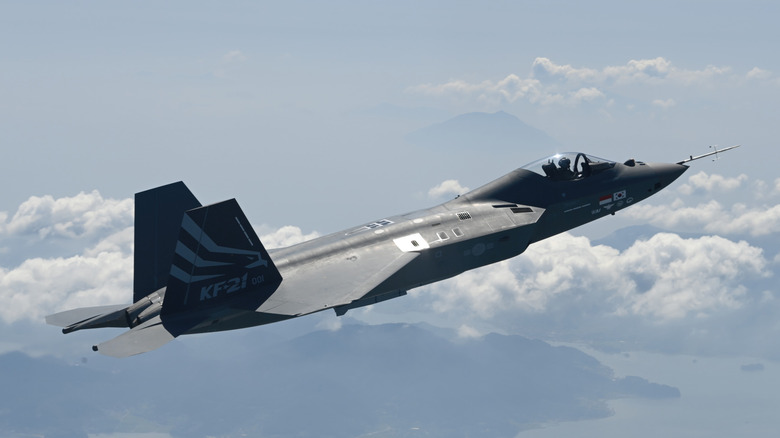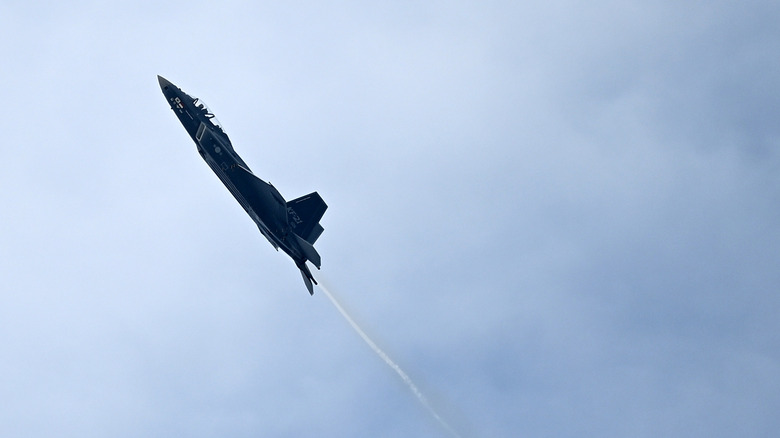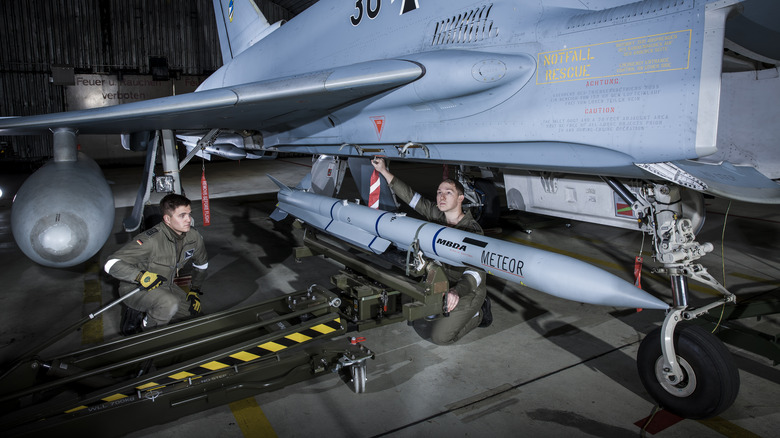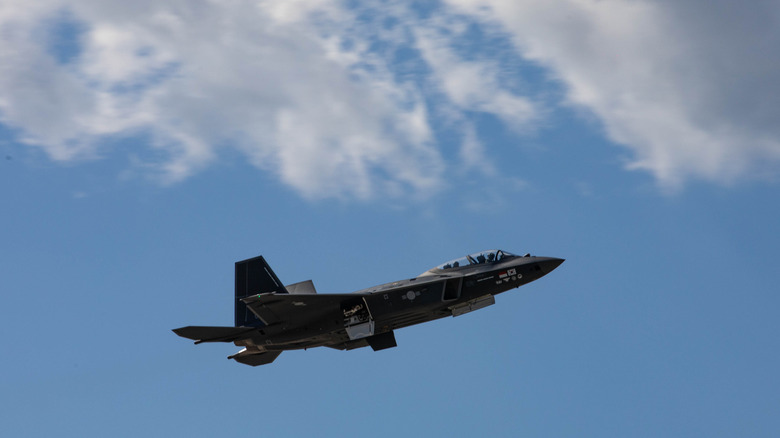South Korea's KF-21 Stealth Fighter Fired An Advanced Air-To-Air Missile For The First Time
According to the South Korean Yonhap News Agency, on May 8, the South Korean homegrown stealth fighter — KF-21 Boramae ("Young Hawk") — test-fired the MBDA Meteor medium-range air-to-air missile off the South Korean coast for the very first time. The test was deemed a success after the active electronically scanned array (AESA) radar of the KF-21 locked onto an unmanned targeting drone over 54 miles away, and then sent the Meteor on its way. Minutes later, the missile passed within a meter of the drone and, presumably, detonated its fragmentation warhead and neutralized the target.
Wednesday's live-fire test was a follow-up to the fit test that the Boramae development team conducted in 2023, in which the aircraft underwent a fit test with the Meteor. During the earlier test, an inert missile was attached to a hardpoint on the Boramae and released mid-flight to evaluate how well the munition separated from the aircraft. This time, the Boramae got the real article and a real target to strike.
While photos and videos from these tests are forthcoming, this test marks a significant milestone in the development of the 4.5-generation fighter jet (not a full fifth-generation fighter aircraft yet). Specifically, the test brought the Boramae closer to what South Korea's Defense Acquisition Program Administration (DAPA) called "Phase 1" — essentially meaning the jet is cleared for air-to-air combat operations.
[Featured image by the ROK Ministry of National Defense via Wikimedia Commons | Cropped and scaled | Korea Open Government License]
The South Korean rising hawk
South Korea's arms industry has been flourishing since the 1970s. With technical assistance from the United States, the country has been developing and manufacturing some of the finest military hardware in the world, like the famous K-2 Black Panther main battle tank.
Despite being one of South Korea's first forays into making a fighter jet, the developer of the KF-21 — Korean Aerospace Industries (KAI) — went pedal-to-the-metal and had an ambitious goal of giving the jet stealth capability (albeit limited) right out the gate. While not as stealthy as true fifth-generation fighters like the F-35 Lightning II, the Boramae's radar-deflecting design makes it stealthier than most fourth-generation jets, such as the Eurofighter Typhoon.
Next, the KF-21 notably incorporated many technologies from the F-35 program, thanks to technology transfer programs between KAI and Lockheed Martin. While key technologies like the AESA radar and the electronic jamming systems that make the F-35 so lethal weren't transferred, as many as 21 "key technologies" in the F-35 program were transferred to KAI for use in the KF-21 project.
In combat, the Boramae should be able to perform nearly as well as a fifth-generation jet. All that — combined with the jet's raw performance, like its ability to supercruise — makes it the closest you can get to a fifth-generation multi-role fighter jet as you can get for the complexity and price of a fourth-generation jet.
The inescapable MBDA Meteor
The air-to-air MBDA Meteor missile that the Boramae fired on Wednesday was hailed by many as the greatest medium-range air-to-air missile in the world. When launched, the missile's ramjet can instantly boost it to over four times the speed of sound to chase down targets as far as 120 miles away.
However, what truly makes the Meteor deadly is its active radar-homing seeker, which has a 37-mile "no-escape zone" (NEZ) — the widest of any medium-range missile in service today. Within the NEZ, an enemy fighter jet that has been locked onto by the Meteor has no means of evading it, be it through deploying chaff or through maneuvering like notching (flipping upside down and diving hard) or jinking (pulling up hard after deploying countermeasures). Even electronic countermeasures (ECM) will have a hard time throwing the missile off its track. You essentially have two choices if you find yourself at the business end of a Meteor: hiding (ducking behind a mountain or other terrain), or ejecting.
Most ideally, though, you'll want to avoid getting that close to the missile in the first place ... a task easier said than done when you're up against the likes of Boramae. The aircraft's relative stealth means it has very high odds of sidling close to a target undetected and bringing it into the NEZ, then spitting out a Meteor for a nearly guaranteed kill. It's why the aircraft's integration with Meteor is such a big deal — the Boramae is shaping up to be an incredibly deadly weapon platform.
The flight is still long for the 'Young Hawk'
Even though the live-fire test was a big leap forward for the Boramae program as a whole, the fighter jet still has a long way to go before it enters service with the Republic of Korea Air Force in full force. Unless something changes in the scheduling, the plane won't be introduced until 2026.
In addition to the Meteor, the Boramae has also undergone a fit test and a live-fire exercise with the IRIS-T missile. With a shorter range than the Meteor, and tracking targets via an infrared heat-seeker rather than radar-homing, the IRIS-T serves as the Boramae's sidearm to the Meteor's long rifle. Optimized for close-range engagements (within 15 miles,) the IRIS-T — manufactured by the German arms-maker Diehl Defence — is one of the most capable missiles in its class.
The ground-launched version of the missile (IRIS-T SLM), which was deployed in Ukraine against Russian cruise missiles, has proven highly effective at intercepting these threats; reportedly achieving a nearly 100% interception rate, according to Ukrainian sources. The airborne version should prove just as effective at neutralizing a variety of airborne threats, from cruise missiles and drones to enemy fighter jets.
The Boramae is still planned to be integrated with many other air-to-air weapons, such as the American AIM-120 AMRAAM and AIM-9X Sidewinder, before the jet is certified to pass "Phase 1." Until then, we'll be watching with great interest as the Boramae evolves with each passing year.



